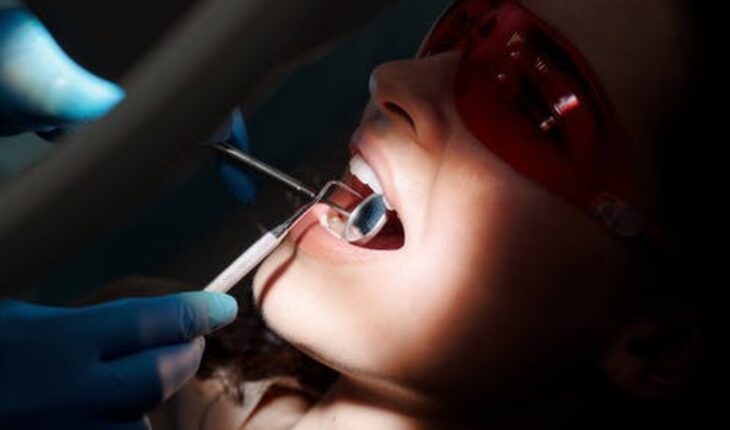When it comes to perfecting your smile, the options can feel like navigating through a maze. You want a solution that will give you a movie-star grin without breaking the bank. Two popular choices for transforming smiles are dental bonding and veneers. While both can correct imperfections, they differ in material, procedure, longevity, and cost. So, how do you decide which route to take? Sit back, and we’ll walk through what you need to know about each option so you can make a confident decision on what’s best for you.
What Is Dental Bonding?
Dental bonding is like the Swiss Army knife of cosmetic dentistry; it’s versatile and can be used to fix chipped teeth, reduce gaps, or change the shape of your teeth. The process involves applying a tooth-colored resin to the affected area, which is then shaped and hardened with a special light. The result is a seamless blend with your natural teeth.
Pros of Dental Bonding
-
Cost efficiency: It’s generally less expensive than veneers.
-
Less invasive: There’s often no need for extensive tooth reshaping.
-
Speedy: The whole process can usually be done in one visit.
Cons of Dental Bonding
-
Less durable: It may chip or break more easily than veneers.
-
Stain susceptible: The material can stain over time, similar to natural teeth.
Now, let’s say you’re looking for top-notch dental bonding at a reputable practice. You might want to consider dental bonding at PK Dentistry. Their skill and attention to detail ensure that the result looks natural and lasts as long as possible, making them a great choice for a smile makeover.
Exploring Veneers and Their Impact on Your Smile
Veneers, on the other hand, are like the tailored suit of the dental world – custom-made, premium, and designed to impress. These thin shells of porcelain or composite material are affixed to the front of the teeth, creating a flawless facade.
Pros of Veneers
-
Strong and long-lasting: Veneers typically have a longer lifespan than dental bonding.
-
Stain-resistant: Porcelain veneers don’t discolor as quickly as your natural teeth or bonding material.
-
Transformative: They offer a more dramatic change for those longing for a perfect smile.
Cons of Veneers
-
Higher cost: They are often pricier than bonding.
-
Irreversible process: Some enamel removal is necessary, meaning there’s no going back once you’ve committed.
Choosing veneers also means understanding the benefits of porcelain veneers. This material is championed for its durability and its unparalleled ability to mimic the translucent properties of natural teeth. They are a fantastic long-term investment for anyone looking to address cosmetic concerns with a reliable and visually stunning solution.
Comparing Costs and Longevity
The Price Tag
Cost is often a major consideration when choosing between bonding and veneers. Bonding can be a wallet-friendly option for minor fixes but may need more frequent repairs or replacements. In contrast, veneers have a heftier initial cost, but since they often last longer, they might be more cost-effective in the long run. Always discuss pricing with your dental office, and keep in mind most cosmetic procedures aren’t covered by insurance.
Going the Distance
Longevity is another critical factor. With proper care, bonding can last several years, but veneers are known to have a lifespan of a decade or more. This makes veneers an appealing option for those who prefer a more permanent solution and are willing to make a larger investment upfront.
Treatment Time and Recovery
The turnaround time for dental bonding is usually swift – often completed in a single visit. Recovery is minimal, and you can return to your routine immediately. Veneers require more planning, including an initial consultation, a session to prepare the teeth, and a final fitting. Some sensitivity is expected after the teeth have been prepared, but it subsides shortly after the veneers are placed.
Maintaining Your New Smile
No matter which you choose, both bonding and veneers require good oral hygiene practices to maintain your new smile. Regular brushing, flossing, and dental check-ups are non-negotiable. Both options also require you to avoid habits such as nail-biting, chewing on pens, or using your teeth as tools to ensure their longevity.
Considering Your Personal Needs
When deciding between bonding and veneers, think about what matters most to you. Are you looking for a quick fix or a lasting change? Is your budget tight, or are you ready for a more significant investment in your smile?
A consultation with a Sterling dentist can help you weigh the pros and cons in light of your specific situation. A dental professional can offer advice tailored to your oral health, the condition of your teeth, and your aesthetic goals.
Ready to Make a Decision?
As you’ve seen, choosing between bonding and veneers depends on various factors such as cost, longevity, and the degree of change you’re seeking. It’s a personal choice that should align with your lifestyle, budget, and the vision you have for your smile.
Summing It Up
We’ve walked through the essentials of dental bonding and veneers, looking at the benefits and drawbacks of each. Remember to consider all aspects and consult with a trusted dental professional. Whether you opt for the quick versatility of bonding or the durable elegance of veneers, you’re on your way to a confident, picture-perfect smile.





